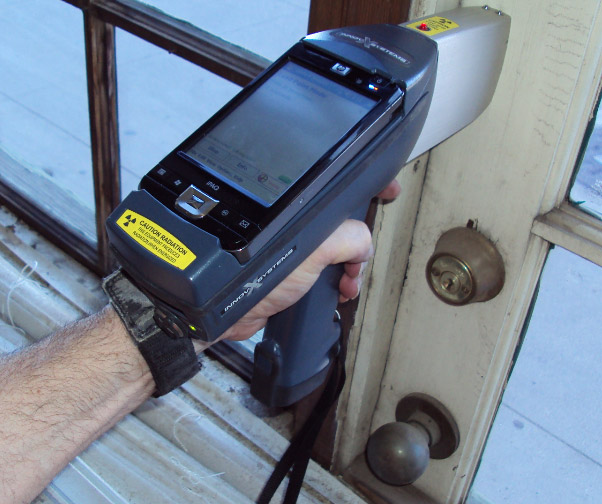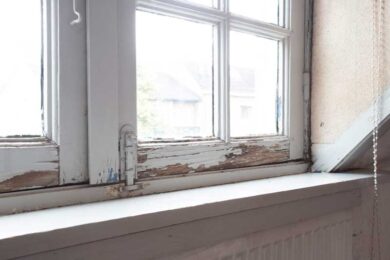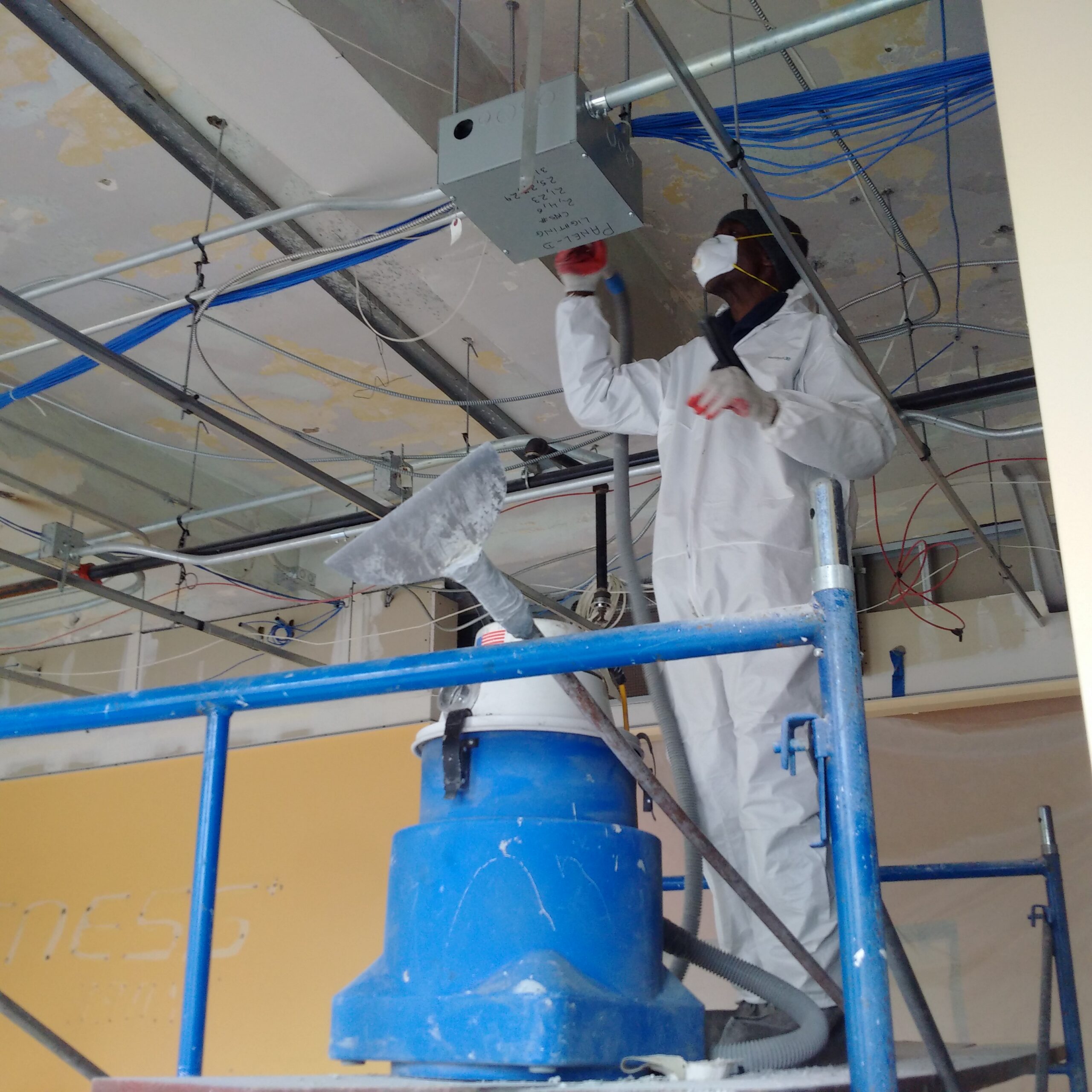NYC Lead Removal Contractors-- Obtain Safe and Effective Solutions
Wiki Article
Step-by-Step Refine for Successful Lead Infraction Removal
Following this, adherence to federal and state policies is paramount to creating an efficient removal plan. The real remediation calls for proficient personnel to apply these plans while strictly adhering to security methods. What happens after the remediation is finished?
Discovery and Evaluation
Discovery and assessment are important action in the remediation of lead offenses. To guarantee a reliable remediation process, it is necessary to carry out a thorough assessment of the setting where potential lead exposure exists. The preliminary stage of detection includes determining resources of lead contamination, which can be found in paint, water pipes, dirt, and dust. Using sophisticated analysis devices such as X-ray fluorescence (XRF) analyzers and atomic absorption spectroscopy (AAS) can offer exact dimensions of lead focus.Once detection is accomplished, an extensive evaluation needs to be taken on. This consists of reviewing the level and seriousness of contamination, in addition to recognizing populaces in jeopardy, specifically children and expectant females. Threat analyses usually entail tasting and laboratory analysis, environmental studies, and wellness influence researches. The collected data ought to be carefully documented to support the growth of an efficient removal approach (Lead Violation Removal in NYC).
In addition, it is crucial to prioritize areas with the highest degree of contamination and those that position the best wellness dangers. Effective communication with stakeholders, consisting of homeowner, residents, and public wellness officials, is crucial for making certain that all events are notified about the findings and the subsequent actions required for removal. This initial discovery and assessment stage prepares for a successful lead offense remediation procedure.

Legal and Governing Conformity
Navigating the landscape of lawful and regulative conformity is a crucial element of successful lead violation removal. Compliance ensures not just the safety of afflicted populaces yet also the integrity and lawful standing of the organization responsible for remediation.This includes precise documentation of all remediation tasks to show compliance. Failing to stick to these guidelines can result in severe fines, consisting of significant fines, lawful action, and reputational damage.
Involving legal specialists concentrated on environmental law can promote navigating these intricacies. Normal training and accreditation for all personnel associated with the remediation procedure are likewise obligatory to ensure adherence to security and regulatory criteria. By prioritizing lawful and regulatory compliance, companies can successfully minimize risks and achieve an effective remediation result.
Planning the Remediation
Effectively preparing the remediation of lead offenses starts with a comprehensive analysis of the infected website. This data-driven method makes sure that removal initiatives are appropriately targeted and efficient.When the contamination is mapped, a danger analysis need to be conducted to evaluate prospective health and wellness threats to human beings and the setting. Lead Violation Removal in NYC. This assessment should consider elements such as direct exposure paths, populace vulnerability, and environmental effects. The understandings collected will certainly develop the basis for choosing a proper removal method
Ultimately, establishing clear, attainable goals for the removal job is vital. These goals must line up with regulative requirements and stakeholder assumptions to make sure compliance and community acceptance. Creating a thorough removal strategy that details techniques, timelines, and source allotment will help with a structured strategy to the cleaning process.
Furthermore, it is important to engage with stakeholders early and keep clear communication throughout Lead Paint Removal Company the preparation stage. This includes informing neighborhood areas, getting essential permits, and collaborating with regulatory agencies to ensure all legal and step-by-step needs are met. A well-crafted remediation plan not only resolves the contamination effectively yet likewise constructs count on and teamwork amongst all celebrations involved.
Carrying Out the Remediation
With a well-structured removal plan in area, the focus changes to the actual implementation of the remediation tasks. This phase includes mobilizing the needed resources, consisting of experienced employees, specialized tools, and top quality products. Begin by clearly defining duties and obligations to make certain accountability and seamless control among employee.The initial action in implementation is to secure the site. This consists of establishing containment areas to avoid lead dust and debris from dispersing, along with employing air filtering systems to keep air top quality. Next, continue with the elimination of lead-based products. Utilize techniques such as damp scraping, chemical stripping, or encapsulation, depending upon the intensity and area of the contamination. It is necessary to stick to safety protocols, including using individual safety tools (PPE) and correct disposal of hazardous materials.
Throughout the removal process, conduct regular assessments and air top quality checking to make certain conformity with governing criteria. Efficient interaction with stakeholders, consisting of homeowner and occupants, is vital to maintain them educated of progression and any kind of unexpected growths. By carefully following these steps, the removal tasks can be carried out effectively and effectively, inevitably mitigating lead threats.
Post-Remediation Approaches
Post-remediation methods play an important function in ensuring the lasting success of lead infraction remediation initiatives. These methods include ongoing surveillance, maintenance, and area education and learning to stop future lead exposure and make certain a risk-free environment.First, normal monitoring is crucial. This involves regular testing of the formerly affected locations to guarantee that lead degrees stay within secure limitations. Residential property owners must establish a routine for these tests, ideally in cooperation with licensed ecological professionals.

Third, educating the neighborhood plays a pivotal duty in sustaining the advantages of removal. Locals and property supervisors need to be notified concerning the risks of lead direct exposure and the most effective methods for maintaining a lead-safe atmosphere. Workshops, educational pamphlets, and neighborhood conferences can be effective devices for disseminating this info.
Conclusion
Successful lead infraction remediation needs an extensive, methodical method encompassing detection and assessment of contamination, adherence to legal and regulatory criteria, thorough preparation, and reliable implementation of removal efforts. This methodical process underscores the relevance of thoroughness and alertness in resolving and minimizing lead contamination.Report this wiki page